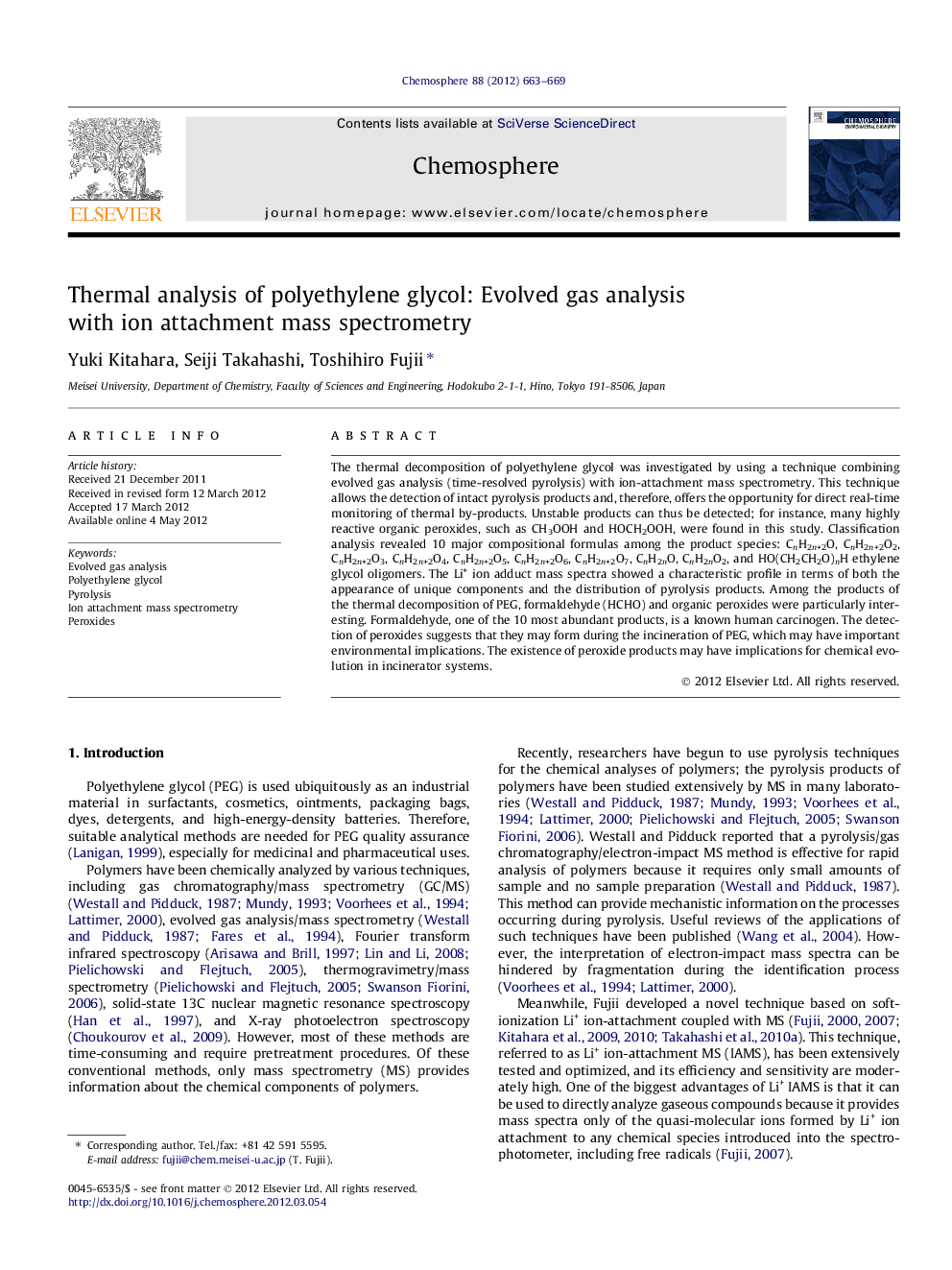| Article ID | Journal | Published Year | Pages | File Type |
|---|---|---|---|---|
| 4410316 | Chemosphere | 2012 | 7 Pages |
The thermal decomposition of polyethylene glycol was investigated by using a technique combining evolved gas analysis (time-resolved pyrolysis) with ion-attachment mass spectrometry. This technique allows the detection of intact pyrolysis products and, therefore, offers the opportunity for direct real-time monitoring of thermal by-products. Unstable products can thus be detected; for instance, many highly reactive organic peroxides, such as CH3OOH and HOCH2OOH, were found in this study. Classification analysis revealed 10 major compositional formulas among the product species: CnH2n+2O, CnH2n+2O2, CnH2n+2O3, CnH2n+2O4, CnH2n+2O5, CnH2n+2O6, CnH2n+2O7, CnH2nO, CnH2nO2, and HO(CH2CH2O)nH ethylene glycol oligomers. The Li+ ion adduct mass spectra showed a characteristic profile in terms of both the appearance of unique components and the distribution of pyrolysis products. Among the products of the thermal decomposition of PEG, formaldehyde (HCHO) and organic peroxides were particularly interesting. Formaldehyde, one of the 10 most abundant products, is a known human carcinogen. The detection of peroxides suggests that they may form during the incineration of PEG, which may have important environmental implications. The existence of peroxide products may have implications for chemical evolution in incinerator systems.
Graphical abstractIntact pyrolysis products of CH3OOH and HOCH2OOH.Figure optionsDownload full-size imageDownload as PowerPoint slideHighlights► The thermal decomposition of polyethylene glycol was investigated by EGA–IAMS. ► The mass spectra show a profile of unique components of pyrolysis products. ► The formation of many aldehyde products, including formaldehyde, was observed. ► Many organic peroxides, atmospherically important compounds, were detected.
